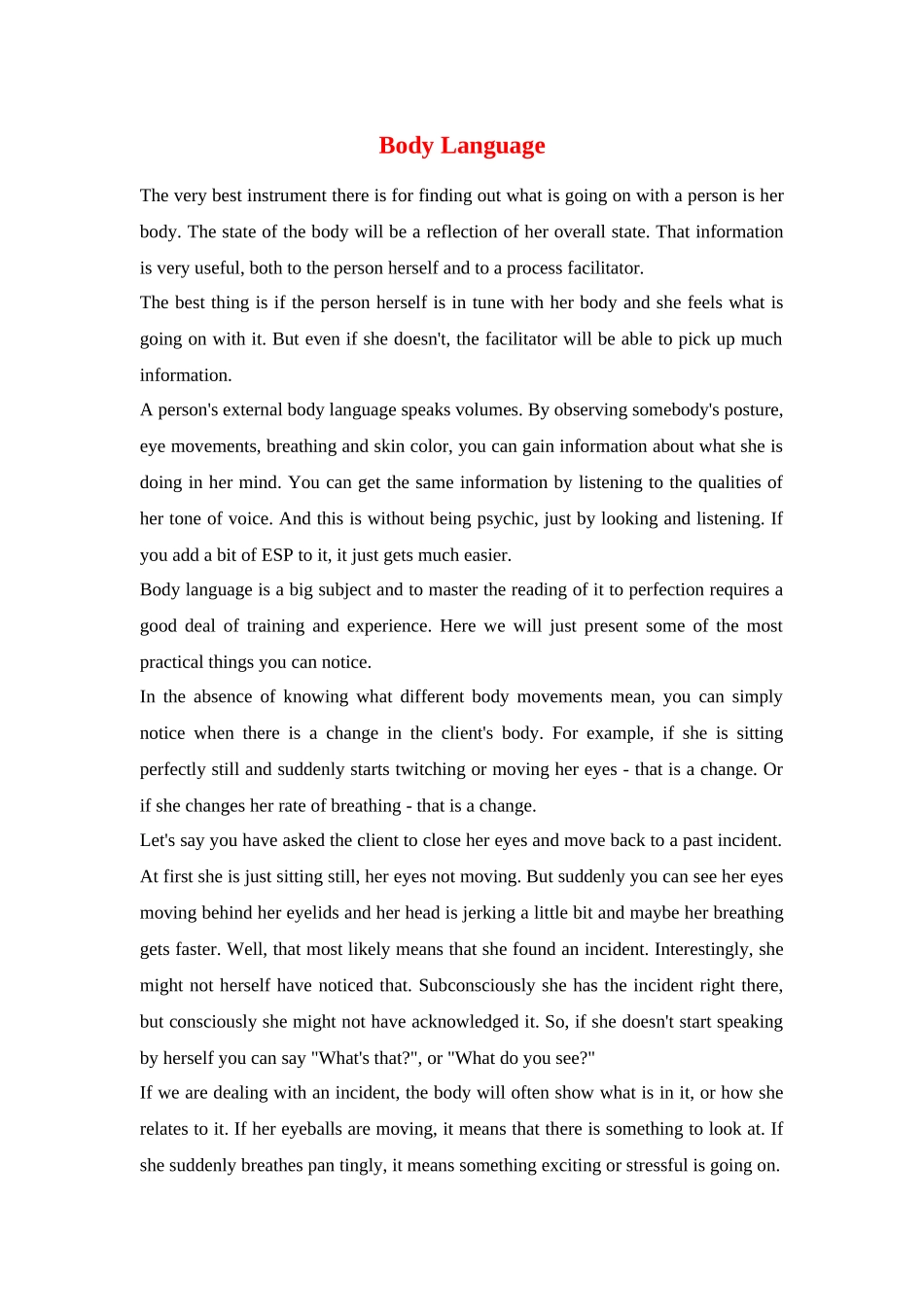Body LanguageThe very best instrument there is for finding out what is going on with a person is her body. The state of the body will be a reflection of her overall state. That information is very useful, both to the person herself and to a process facilitator. The best thing is if the person herself is in tune with her body and she feels what is going on with it. But even if she doesn't, the facilitator will be able to pick up much information. A person's external body language speaks volumes. By observing somebody's posture, eye movements, breathing and skin color, you can gain information about what she is doing in her mind. You can get the same information by listening to the qualities of her tone of voice. And this is without being psychic, just by looking and listening. If you add a bit of ESP to it, it just gets much easier. Body language is a big subject and to master the reading of it to perfection requires a good deal of training and experience. Here we will just present some of the most practical things you can notice. In the absence of knowing what different body movements mean, you can simply notice when there is a change in the client's body. For example, if she is sitting perfectly still and suddenly starts twitching or moving her eyes - that is a change. Or if she changes her rate of breathing - that is a change. Let's say you have asked the client to close her eyes and move back to a past incident. At first she is just sitting still, her eyes not moving. But suddenly you can see her eyes moving behind her eyelids and her head is jerking a little bit and maybe her breathing gets faster. Well, that most likely means that she found an inciden...


